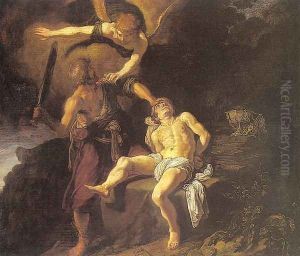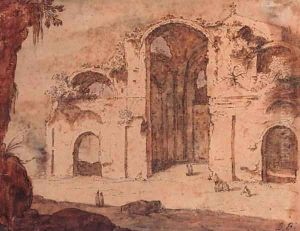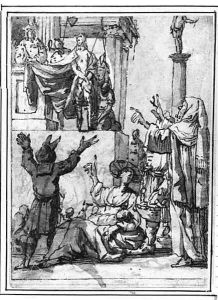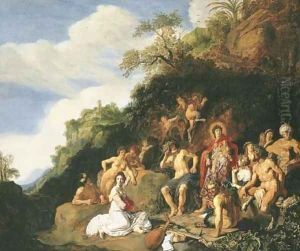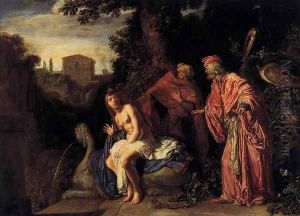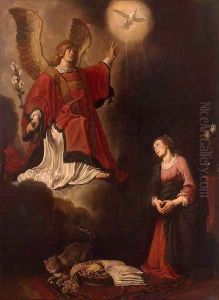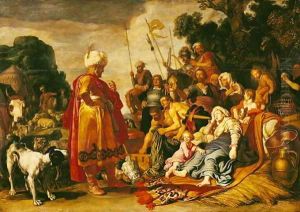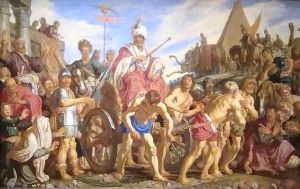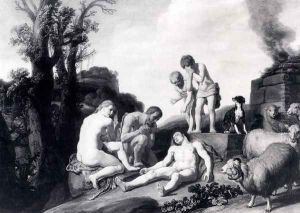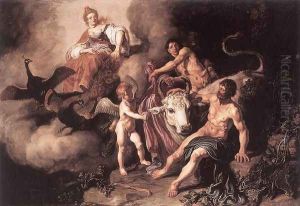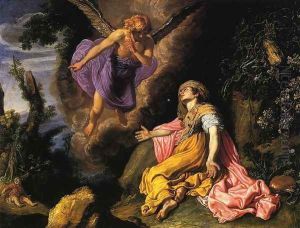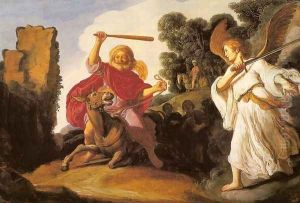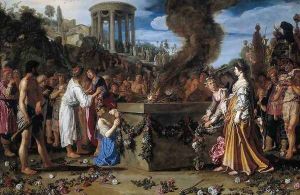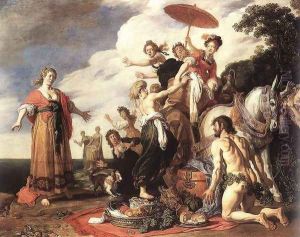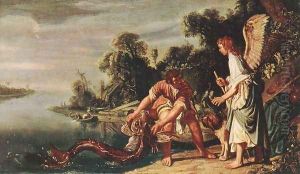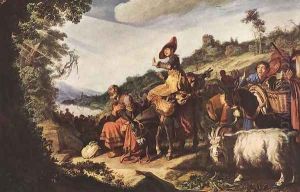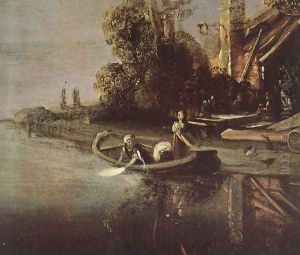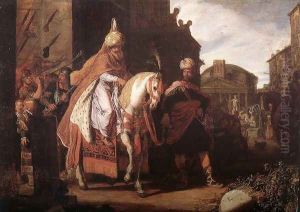Pieter Pietersz. Lastman Paintings
Pieter Pietersz. Lastman was a prominent Dutch painter of the early 17th century, renowned for his contributions to the development of historical and biblical scenes in art. Born in Amsterdam in 1583, Lastman's early life set the stage for a career that would significantly impact the Dutch Golden Age of painting. His work is often characterized by its dramatic use of lighting, detailed landscapes, and emotional depth, elements that would heavily influence his contemporaries and future generations of artists, most notably Rembrandt van Rijn, who was one of his pupils.
After initial training in Amsterdam, Lastman ventured to Italy in 1603, where he spent several years absorbing the Italian approach to painting, particularly the works of Caravaggio. This experience deeply influenced his style, integrating the Italian mastery of light and shadow with his native Dutch sensibility. Upon returning to Amsterdam in 1607, Lastman established himself as a leading painter, attracting a number of students and followers.
Throughout his career, Lastman specialized in narrative scenes, drawing upon stories from the Bible, mythology, and history to create complex, multi-figure compositions. His paintings are known for their vibrant color palette and meticulous attention to detail, aspects that made his works highly sought after during his lifetime. Lastman's ability to weave compelling narratives through visual art was unmatched, making his paintings resonate with viewers on both an emotional and intellectual level.
Pieter Pietersz. Lastman continued to work and teach in Amsterdam until his death in 1633. His legacy is not only in the masterpieces he left behind but also in the influence he exerted on the next generation of Dutch painters. His teachings and techniques would be carried forward by his students, ensuring that his impact on the Dutch art scene endured well beyond his lifetime. Among his contributions, his emphasis on storytelling through art and the integration of dramatic lighting would shape the direction of Dutch painting, marking him as a pivotal figure in the history of art.
